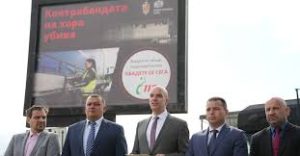Why bear rewilding in northern Italy is controversial

Ben Lerwill
In February of this year, a male brown bear known as M90 was controversially shot dead by forestry police in the Northern Italian province of Trentino. According to reports, the animal sealed its own fate by showing “excessive confidence” around humans. In April 2023, the same Alpine region witnessed a fatal attack on a jogger, who had the misfortune to startle a female bear with cubs. It’s a situation that’s seen emotions run high.
Europe’s largest mountain range stretches into eight countries and is home to some 14 million people, with countless towns and villages and more than 8,000 ski lifts — but it’s far from being a predominantly human domain. Across the continent, only the Mediterranean region can rival the Alps’ variety of flora and fauna. Endemic mountain plants abound, forests cloak remote hillsides and the thousands of animal species that fly, swim and forage here include some of Europe’s most charismatic predators. The problem? Wild carnivores, awe-inspiring though they might be, are not universally popular.
Centuries ago, much larger populations of wolves, lynxes, brown bears and vultures roamed the Alps, living there as they’d done for millennia. Paw prints peppered the mountain pastures. Howls echoed through moonlit valleys. Over time, however, a depressingly familiar pattern of persecution and habitat loss decimated their populations. Some survived and remained — albeit in far smaller, more fragmented numbers.
Over the last two to three decades, conservation and rewilding initiatives have focused on protecting these creatures, in some cases physically reinstating them, not only for the good of the individual species, but because — as nature’s own hunters and scavengers — the animals play a key role in keeping the often delicate Alpine ecosystem in balance. The bears in the Trentino region, which have grown in number from 10 to around 100 after being reintroduced from Slovenia in the early 2000s, aren’t just a furry nuisance.
“The Alps in particular have had very large increases in populations of red and roe deer,” explains Fabien Quétier, head of landscapes at Rewilding Europe. “These densities of herbivores are a problem for natural regeneration and can cause issues like car accidents. Predators play a role in regulating that.”
Indeed, when carried out responsibly, the upsides of rewilding are substantial. “It’s like hitting the reset button on nature,” says Natalya Jarlebring of Milkywire, a European organisation that helps fund climate- and nature-based projects around the world. In other words, it helps nature fall back into balance.
Rewilding refers to the process of protecting an environment and returning it to its natural state, for example by bringing back wild animals that used to live there. It often also involves re-planting native flowers and trees, or dismantling fencing to allow nature room to grow. But for obvious reasons, it’s the wildlife that tends to grab the headlines.
Wolves, bears and the far shyer lynx are all known to attack farmed livestock, which adds a further complicating factor to the debate. But for Claudio Groff, who heads the Large Carnivores Division of Trentino’s Wildlife Department, it’s important to retain a wider sense of perspective.
“A very low percentage of the bears in Trentino can be problematic to humans,” he says. “That’s usually only around 5% to 10% of the population, the same for bears found anywhere in Europe.”
Wild brown bear in natural green summer alpine mountain landscape, Italy (Trentino)
Vigilance is key. He explains that his department’s official policy towards ‘problem bears’ has three stages: first is to have conversations within the community; second is to manage elements that might attract wandering bears, such as open bins; and third is to deter over-assertive animals from approaching human settlements, by using dogs or rubber bullets.
“If none of these steps work, the absolute final option is to shoot the bear,” he says. The culling of M90 was a last resort. “We’re never happy when we have to do this.”He also points out that, in spite of recent incidents, a substantial number of locals remain supportive and proud of the bears’ resettlement. “A lot of people in Trentino are still happy that we have these wonderful animals in our region, despite the difficulties,” he says. “We also have to remember that bears were here in the Alps before we were. It’s their home as well.”
Questions of perspective and education come up regularly where rewilding is concerned. Many more people are harmed in the Alps each year by cattle than they are by carnivores — “a cow is also a dangerous animal,” points out Quétier — and the instincts of the vast majority of predators mean that they’re mainly nocturnal and actively avoid humans.
In the absence of an over-arching Alpine regulatory body for nature recovery, the success of rewilding schemes — whether in Trentino or elsewhere — is dependent on effective local management. “It’s important to involve local communities from the outset,” emphasises Jarlebring. “This means listening to their concerns, addressing their needs, educating them about the benefits of rewilding, building trust and fostering a sense of ownership.”
Paula Mayer, a research assistant at ETH Zurich University, specialises in human-bear conflict. She explains that attitudes towards large carnivores can often differ from one postcode to the next. “In mountain regions in Italy, there can be a marked difference in community attitudes towards bears between those places where organisations have been in and spoken to the locals, and the places where they haven’t,” she says. “It’s pretty remarkable.”
Tying in with this is the issue of visitors. Trentino is, after all, a popular travel destination, and Mayer points out that having large wildlife in an area can be a godsend for responsible travel businesses. There are already examples in some parts of North America, where the presence of bears has long helped draw wildlife-loving travellers. “It’s the same here in Trentino,” says Groff. “There’s a lot of interest in our bears from visitors. Some are also a bit worried, it’s true, but around 80% or 90% of them are interested rather than fearful.”
The economic benefits are particularly important given the challenges facing the winter sports industry. “Skiing is the mainstay of many Alpine valleys, but it’s now becoming tricky to have reliable snow,” says Quétier.
“A big topic for some of these mountain communities is how to diversify. If we’re looking at less impactful tourism, spread throughout the seasons, rewilding has something to offer. Whenever you go skiing in the Alps, you’re in wolf territory — and often lynx territory, too.”
Long-established tour operator Inntravel is one company offering hiking trips to the Alps. Product manager Alison Temple is realistic about the risks. “The media coverage of an incident such as the bear attack in Trentino can create the image that such events are a regular occurrence, which of course they’re not,” she says.
“Customers who actively choose our most challenging walking itineraries are always up for an adventure, and it’s our job to help expose them to the amazing wilderness of the Alps while being responsible for their safety.”
With bad news stories capable of distorting the picture when it comes to bears, it should also be stressed that, beyond Trentino, populations of brown bears in the Alps are sporadic to non-existent. Whether this changes in future remains to be seen. In the meantime, rewilding projects of other kinds — involving lynxes, vultures, wolves, ibexes and other species — continue to be initiated across various parts of the range.
The vision is of mountain valleys restored to their former glory, brimming with biodiversity. In these fast-moving times, rewilding can tap into something deeper — to the advantage of both locals and visiting travellers.
“Rewilding can have cultural and spiritual benefits,” says Jarlebring. “Imagine a community reconnecting with the environment around them and feeling a deeper connection to the land. It’s about more than just practical advantages. It’s about fostering a sense of belonging and identity.”





